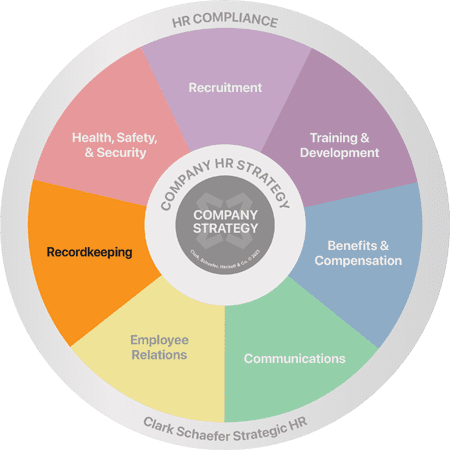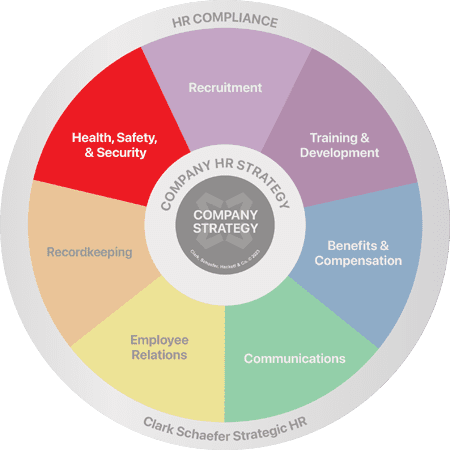What Does an HR Audit Involve?
Last Updated on April 6, 2022 / HR Strategy

HR Audit. No one likes to hear that word—audit. Assessment. Inspection. Review. Evaluation. Analysis. No matter what word you use, negative thoughts start to fill your head. I challenge you, however, to look at this event as a chance to review and renew. A properly conducted HR Audit can be (and should be) a welcome addition to your annual HR calendar. Regularly having a review of your human resources function can help you remain the best in class and continuously improve the function and services you provide.
What is involved in an HR Audit?
Auditing involves an organized and structured review of your organizational practices. By reviewing company and department goals, policies, procedures, legal requirements, and established processes, the HR Audit will allow a complete review to assure you are on track and compliant. The review will help identify gaps in policies and identify what is happening versus what should be happening. Many audits identify areas where procedures are not followed or haven’t been updated. Identifying outdated or inconsistent policies and procedures can lead to:
- Review of processes to determine what makes the most sense for your organization
- Assuring that everyone is following the same procedures
- Process improvement and enhanced customer service
- Assuring HR Compliance
- Improvement of the quality of the process from those inside human resources as well as those outside of the process who rely on it for their department’s success.
How to conduct an effective HR Audit?
How do you make sure your HR Audit is a constructive event resulting in improvements rather than demerits? The key to an effective audit is to clearly define it and have the process work to your advantage. When selecting an auditor to review your function, I recommend securing an individual or team that will work with you to ensure you get what you want out of the review. In order to do that, interview those you are considering to take on the auditor role to verify that they understand your culture and your industry.
Consider the following before you engage in the process:
- Identify your desired outcome. What is the goal of your HR Audit? Why are you conducting this review? What do you hope to accomplish from the review? Is it a compliance-driven review? Is it a review of process and best practice? Some employers are confident that their compliance is on point and prefer a review of processes and best-practices in functional activities such as recruiting, payroll processing, or even benefits administration. Others are solely concerned about compliance and keeping up with the myriad of changing legal requirements. Determine your desired outcome before you begin and tailor the review to meet those expectations on the front end.
- Determine which HR areas you want to review. Are you reviewing all of the functional aspects of HR or just one or two key areas? For example, some employers request an in-depth review of a specific area, such as their recruiting function, rather than a review of all areas. The review would consist of an evaluation of both compliance and best practices in the recruiting process to identify areas of potential improvement surrounding their recruiting efforts. Others prefer to have a review of all of the HR areas. In this type of review, all functional areas reviewed would include recruiting and employment, recordkeeping, policy development, compensation, benefits, health and safety, communications, and payroll. These reviews typically involve a focus on compliance in these areas but also review processes and procedures for each of the areas. The organizational effectiveness of the HR function can also be reviewed to assure the department is meeting the needs of their internal customers.
- Determine who you would like to have involved in the audit. Will you only include human resources staff that regularly touch the function or will you include your internal customers as well? For example, if you are doing a review of your recruiting and employment process, who will you include? Your HR recruiting staff is an obvious choice, but what about the hiring managers in the functional areas? Will you include a sampling of individuals involved in the orientation and onboarding program? Determine how deep you wish to go as you review the areas and who will be involved in the audit.
- Determine how you are going to address any deficiencies or findings. The report provided at the end of the audit will most likely include a number of items that could be used for improvement. Findings may include items such as general compliance or regulatory items that need to be addressed or even a process improvement recommendation. Most audits help you to determine the high priority items versus those of lower priority based upon compliance concerns. Once they are identified, it will be up to you and your team to create your own internal priority for the action items and determine who will be tasked with correction. Some may involve an easy one-person / one-click fix, such as updating the I-9 form you are using. Others may involve improved process recommendations which could include a team to work through, resolve, and update. Determine how you will approach the “fixes” so expectations are clear at the onset. Not everything will be able to be addressed in one day, so align expectations accordingly.
A clearly laid out plan and expectation can significantly impact the concerns surrounding a human resources audit. If the review ends up being “nasty,” it is most likely due to a lack of clear expectation and direction at the onset. Work cooperatively with your chosen reviewer to make sure you are getting what you want out of the review so positive outcomes can be reached.
Thank you to Patti Dunham, Director, HR Solutions with Strategic HR, for sharing your expertise on HR Audits.
Strategic HR knows that keeping abreast of HR Compliance issues can be daunting, especially when the laws keep changing. We can help you stay compliant by offering resources to help you identify and mitigate compliance issues, such as our HR Audit which helps identify trouble spots in your HR function. If you would like to receive a customized quote for an HR Audit, you can Request an HR Audit Quote.







